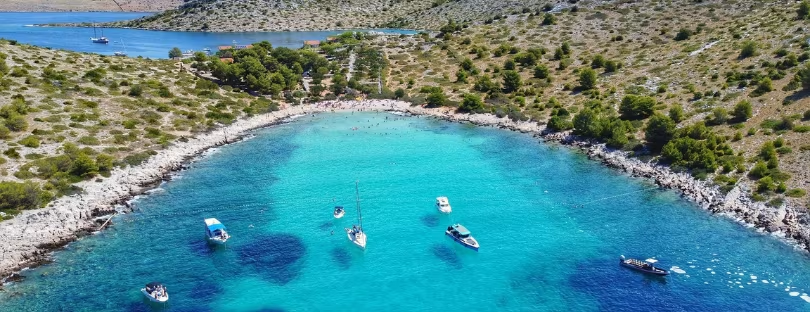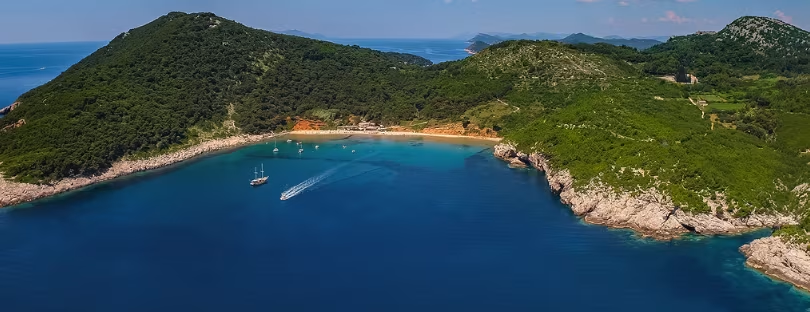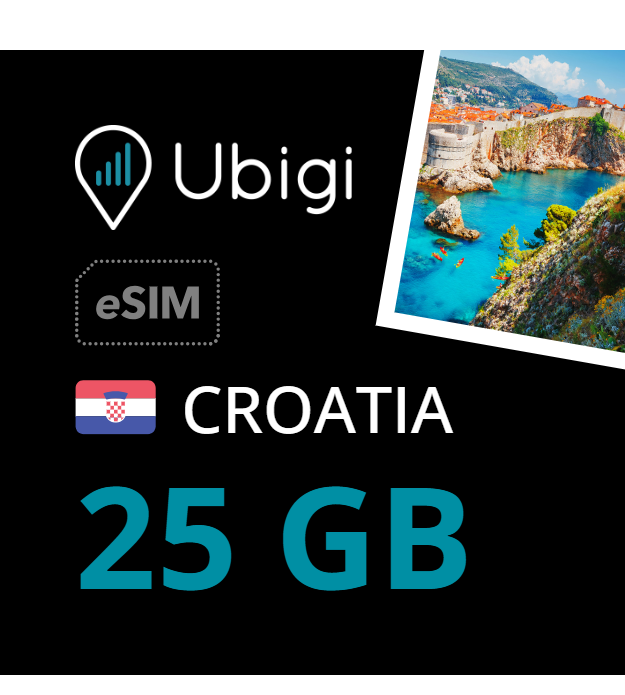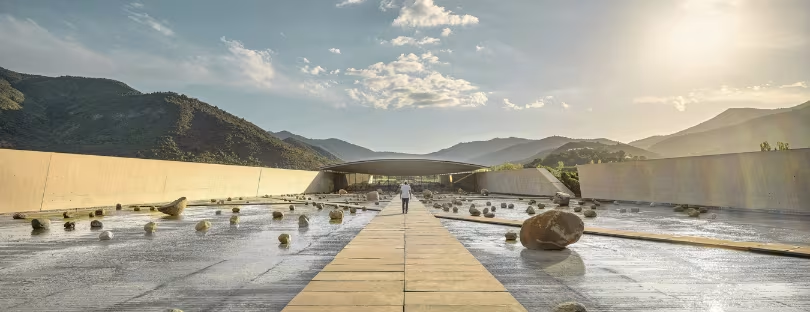
Discovering the Elaphiti Archipelago: Croatia’s Hidden Island Escape
If you ever needed a reminder that the best places aren’t always the most famous ones, let me introduce you to the Elaphiti archipelago – a small, sun-soaked cluster of Croatian islands just off the coast of Dubrovnik. It’s the kind of place where time stretches, phones get forgotten, and even your most stubborn worries start to fade somewhere between the waves and the scent of pine trees.
The Elaphiti Islands (or Elafiti, as locals often say) are just a short boat ride from Dubrovnik, yet they feel like a different world entirely. Fewer crowds, fewer cars, and a whole lot more charm. Think sleepy fishing villages, olive groves that look like they’ve been there for centuries, and coves so clear you’ll question if your eyes are lying to you.
Let’s take a slow journey through this little Adriatic wonderland.
Where exactly are the Elaphiti Islands?
Geographically, the Elaphiti archipelago lies northwest of Dubrovnik, forming a loose chain of around 13 islands and islets. Most are uninhabited, which gives the whole area this magical, untouched vibe. The three main islands that welcome visitors are Koločep (Kalamota), Lopud, and Šipan — each with its own rhythm and personality.
They’re connected by daily ferries and water taxis, so you can easily hop between them, or pick one as your base and let the days drift by.
Koločep: The closest and greenest
If you’re leaving from Dubrovnik, Koločep will be your first stop — and it might surprise you how quickly the city’s bustle disappears. Known locally as Kalamota, this is the smallest inhabited island in the group, but it’s lush, quiet, and incredibly inviting.
There are no cars here — just winding paths through pine forests, little beaches, and sleepy hamlets called Gornje Čelo and Donje Čelo. The whole island feels like a nature therapy session you didn’t know you needed.
Koločep also hides something for the adventurous: Blue Cave (Modra špilja). You can swim inside when the sunlight hits it just right, and the entire cave glows in this surreal, electric blue. It’s not huge or touristy, but that’s the point — it feels like a secret.
Local tip? Grab lunch at one of the seaside konobas (traditional taverns). Order grilled fish, a glass of white wine, and don’t rush. Nothing here is meant to be rushed.
Lopud: The island of sand and style
Next up: Lopud. This is the island everyone falls in love with — and for good reason. It’s car-free, beautifully kept, and has the kind of beaches that make you want to cancel your return ticket.
Lopud’s main draw is Šunj Beach, one of the rare sandy beaches on the Adriatic coast. It stretches in a gentle curve between green hills, with shallow water that stays warm and calm. If you’re coming with family or just want to float for hours, this is your place.
The village of Lopud itself has that postcard-perfect vibe — a long promenade lined with palm trees, stone houses, and little cafés where you can watch boats drift in. There’s a touch of elegance here, especially at Lafodia Sea Resort, a stylish hideaway perched right above the sea. But the island still feels authentic — locals still fish, gardens still bloom, and the church bells still mark time.
Fun fact: Lopud was once home to a wealthy seafaring community. You can still spot the remains of old aristocratic mansions scattered across the hills, adding a quiet whisper of history to your walk.
Šipan: The biggest and most soulful
If you crave a bit more space and a dose of authentic island life, Šipan is your go-to. It’s the largest of the Elaphiti Islands, yet still wonderfully peaceful. Imagine a place with olive trees older than some European capitals, vineyards climbing up rocky slopes, and locals who’ll wave to you just because they can.
Šipan has two main villages: Šipanska Luka and Sudarad. A single winding road connects them, and cycling between the two is one of the best ways to explore. The island has a rustic beauty — not polished, not tourist-perfect — but full of life.
Don’t miss Skar Winery or one of the old stone estates that belonged to Dubrovnik’s nobility. In the 15th century, Šipan was a sort of countryside escape for the elite of the Dubrovnik Republic, which explains the elegant villas and fortified houses dotting the island.
And if you’re here for food (which you absolutely should be), Šipan delivers. Octopus salad, homemade olive oil, and local wine on a terrace overlooking the bay — it doesn’t get more Mediterranean than that.
How to get there
Reaching the Elaphiti Islands is refreshingly simple. From Dubrovnik’s Gruž Port, ferries operated by Jadrolinija run daily to all three main islands. The ride to Koločep takes about 30 minutes, to Lopud around 50, and to Šipan just over an hour.
Alternatively, you can join a day trip or private boat tour, which often includes swimming stops, snorkeling, and a picnic lunch onboard. But honestly? If you have time, spend at least a night or two. The islands have a completely different soul once the day-trippers head back to Dubrovnik.
When to visit
The best time to explore the Elaphiti archipelago is between May and October. July and August are the busiest (and hottest) months, but even then, the islands never feel as crowded as the mainland. May, June, and September are ideal — warm seas, blooming landscapes, and fewer tourists.
Winter is quiet, many places close, but if you love solitude, you might find it beautifully peaceful. Just keep in mind: ferry schedules are limited off-season.
Why the Elaphiti Islands feel different
What really sets the Elaphiti Islands apart is their pace. Croatia has countless stunning islands — Hvar, Brač, Korčula, Vis — but the Elaphiti archipelago offers something subtler. It’s about slowness, simplicity, and connection.
There’s a rhythm here that invites you to reset. Mornings start with the sound of gulls and the smell of coffee drifting from a terrace. Afternoons are for swimming and dozing under olive trees. Evenings? A walk by the sea, a plate of grilled squid, and a sky full of stars.
And yet, you’re never far from Dubrovnik. You can easily blend a few island days into your city break, or vice versa. It’s that perfect combination — remote enough to feel like an escape, close enough to be effortless.
A few local favorites to add to your list
- Blue Cave (Koločep) – Swim inside when the sunlight hits, it’s like diving into liquid sapphire.
- Šunj Beach (Lopud) – Sandy, shallow, and wonderfully laid-back.
- Skar Winery (Šipan) – Local wines, olive oils, and views you’ll want to bottle.
- Lafodia Sea Resort (Lopud) – For a touch of comfort without losing the island’s charm.
- Kayaking between the islands – It’s the best way to see hidden coves and sea cliffs.
Final thoughts
The Elaphiti archipelago isn’t the place for nightclub hopping or flashy resorts — and that’s exactly its charm. It’s about feeling the wind on your face as the ferry glides past turquoise coves. About diving into the sea before breakfast. About losing track of time and realizing that’s the whole point.
In a world obsessed with being busy, these little Croatian islands remind you what it’s like to simply be.
So next time you’re in Dubrovnik, don’t just look at the Elaphiti Islands from the city walls. Go there. Stay a night, swim a little longer, walk a little slower. You’ll come back with that unmistakable glow that only the Adriatic—and a few secret islands—can give you.











